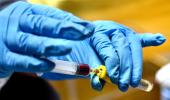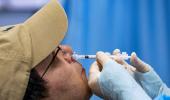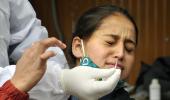The SARS-CoV-2 virus spreads throughout the body, including the brain, and lingers for almost eight months, shows an analysis of tissue samples from the autopsies of people who died due to COVID-19.

The researchers from the US National Institutes of Health (NIH) tested samples from autopsies that were performed from April 2020 to March 2021. They conducted extensive sampling of the nervous system, including the brain, in 11 of the patients. All of the patients died with COVID-19, and none were vaccinated.
The blood plasma of 38 patients tested positive for SARS-CoV-2, three tested negative, and plasma was unavailable for the other three.
Thirty per cent of the patients were female, and the median age was 62.5 years. Twenty-seven patients (61.4 per cent) had three or more comorbidities.
The median interval from symptom onset to death was 18.5 days.
The study, published in the journal Nature, showed that SARS-CoV-2 primarily infected and damaged airway and lung tissue.
However, the researchers also found viral RNA in 84 distinct body locations and bodily fluids, and in one case they isolated viral RNA 230 days after a patient's symptoms began.
They detected SARS-CoV-2 RNA and protein in the hypothalamus and cerebellum of one patient and in the spinal cord and basal ganglia of two other patients.
However, the study found little damage to brain tissue, "despite substantial viral burden."
The researchers also isolated viable SARS-CoV-2 virus from diverse tissues in and outside the respiratory tract, including the brain, heart, lymph nodes, gastrointestinal tract, adrenal gland, and eye.
They isolated virus from 25 of 55 specimens tested (45 per cent).
"We demonstrated virus replication in multiple non-respiratory sites during the first two weeks following symptom onset," the authors of the study noted.
Prior to this study, "the thinking in the field was that SARS-CoV-2 was predominantly a respiratory virus," senior study author Daniel Chertow from NIH added.










